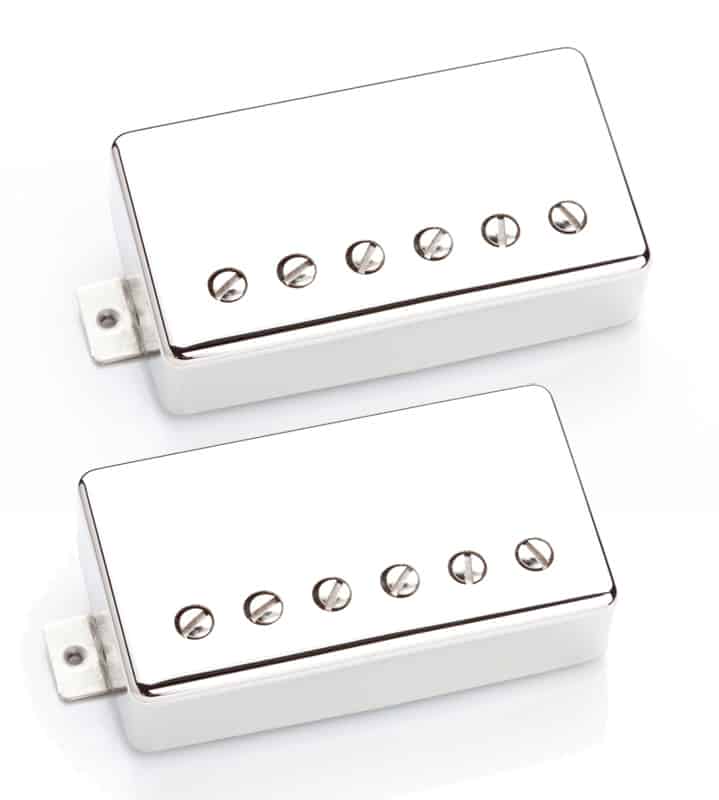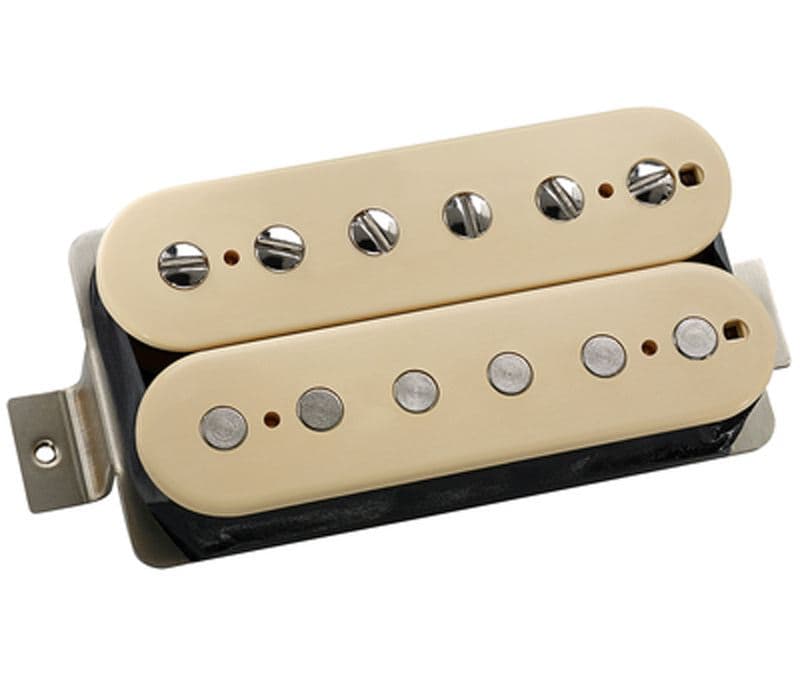Humbucker Pickups: in depth, wiring & terms
Posted by Aaron Peterson on 26th Mar 2015
So far I've covered a brief overview of the history of guitar pickups as well as an in depth look at single coil pickups. In this post we'll look more closely at humbuckers.
A humbucker features two coils, one wound in the opposite direction (reverse wound or RW) and with magnets opposing polarity from the other coil (reverse polarity or RP). This design produces a few unique characteristics.
First, the output of the pickup is higher (hotter, louder, etc). Second, the tone is also a fuller, fatter tone with more mids and bass. Lastly, and perhaps most importantly, the introduction of the second reverse wound coil eliminated the 60 cycle hum found in single coils.
Types of Humbuckers
There are a variety of humbuckers available, but most fall into a handful of general categories. These categories are PAF, vintage or moderate output, high output, and active humbuckers. You will find that there is some overlap between these. Lets break it down.
PAF Humbuckers
These are designed after the vintage Gibson "Patent Applied For" humbucker. This type of humbucker gives you the tone that most people associate with humbuckers. These types of humbuckers feature moderate output and typically have vintage braided single conductor leads.
What does a PAF humbucker sound like?
PAF humbuckers have a full sound. Your tone will be a little less bright than a single coil pickup. PAFs will give you warm lows and clear highs.
A couple of our favorite PAF humbuckers are:
Seymour Duncan SH-55 Seth Lover Neck & Bridge Humbucker pickup set

DiMarzio DP275 PAF 59 Bridge Humbucker and DiMarzio DP274 PAF 59 Neck Humbucker

Vintage or Moderate Output Humbuckers
These humbuckers are built similarly to PAF's but are built to produce more output and typically different tones due to a change in components.
High Output Humbuckers
High output humbuckers are wound with more wire, so they feature more output than a PAF, Vintage or Moderate stylehumbucker. These pickups are typically used for rock, metal, and their variants. They often utilize four conductor wiring allowing more switching and tonal options than a traditionally designed humbucker.
Active Humbuckers
Active humbuckers require external power and produce a tone that's very modern and typically very high output. Active designs are typically quiet in operation and feature great tonal clarity.
There are a handful of other unique humbucker designs on the market such as the Lace Alumitone models, but the vast majority of models on the market fall into the above categories.
Lead Wires
There are two types of lead wires that are most common.
Vintage braided single conductor
Early humbucker models used what's called a vintage braided single conductor wire. This combines the two individual coils into one, thus creating the humbucker (wired in series - see below for more detail).
This is still a very common wiring style and allows the humbucker to be wired into a standard configuration often with one pickup in the neck and one in the bridge (like a Les Paul or SG style guitar). The two humbuckers can then be wired with a 3-way selector switch to use just one or both of the pickups.

Four conductor
Four conductor models are a more recent development and allow the user to access the start and end of each coil of the humbucker. Why would you want to do that? Well, simply put: options!
Some people like simple, tried and true things while other people like options. If you like options, the four conductor humbucker is for you! With this wiring option you can still wire your guitar just like a vintage single conductor model, yet with the access to each coil you can also use just 1/2 of each humbucker (giving you a tone very similar to a single coil pickup) and you can also switch between series and parallel wiring for different tonal options.
Other Types of Wiring
While the first two types of lead wires are the most common, there are a handful of other options on the market including two and three conductor models.
Wiring configurations & terms for Humbucker pickups
The following terms will be helpful for you to know in regards to Humbucker pickups
Coil Splitting
This is possible with a humbucker that allows you to access just one of the coils (typically a 4-conductor model). When accessing a single coil the output will typically be 1/2 of what the standard output is for the humbucker. Tone will be similar to a single coil pickup.
Parallel Wiring
Again this is possible with a 4-conductor pickup. This allows the user to access both coils on the humbucker and use them side by side thus creating a different tone than wiring in series. The output is less than series wiring and produces more clarity and high end.
Series Wiring
Most "traditional" humbuckers (ie those built with a vintage braided lead wire) are wired in series- essentially going from one coil into the other coil consecutively. Series wiring produces more output than parallel and typically features more mid range tone.
Wax potting
Early pickups, especially humbuckers would sometimes produce microphonic feedback (ie unpleasant feedback, not the musical type often associated with rock music). This was caused due to small voids inside the pickup between the different components.
Dipping a finished pickup into liquid wax fills these voids and prevents microphonic feedback from occurring. Wax potting is typically standard for most modern pickups, but since wax potting does make small changes to the tone of a pickup there are a few exceptions such as the Seymour Duncan Seth Lover model.
All of these terms and concepts discussed have a lot more detail that can be discussed, but I've tried to summarize into basic concepts in an effort to give a quick overview. A great resource if you'd like to read more in depth is the Seymour Duncan Pickup Glossary.
You can find all the Humbucker pickups we sell at Macdaddy Music here.
